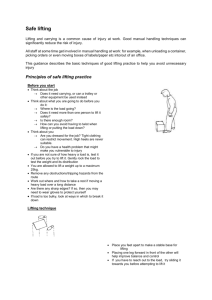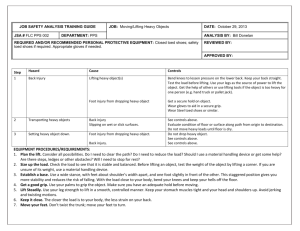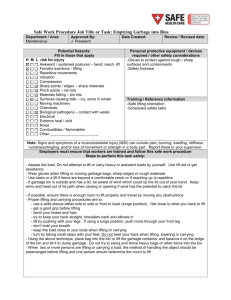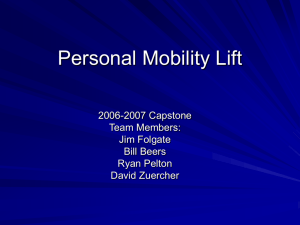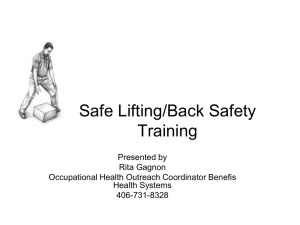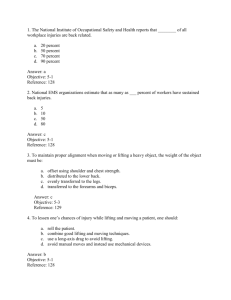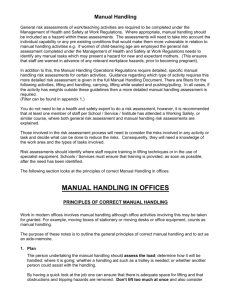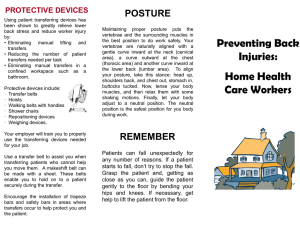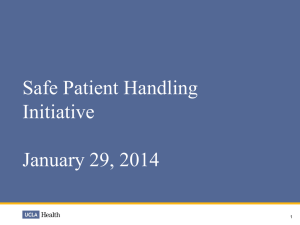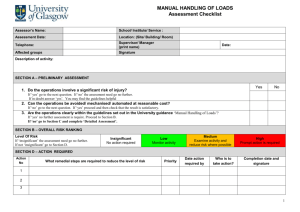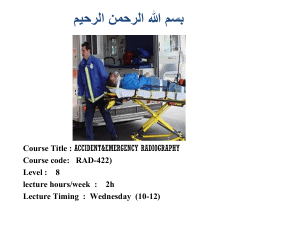Chapter 35: Lifting and Moving Patients
advertisement
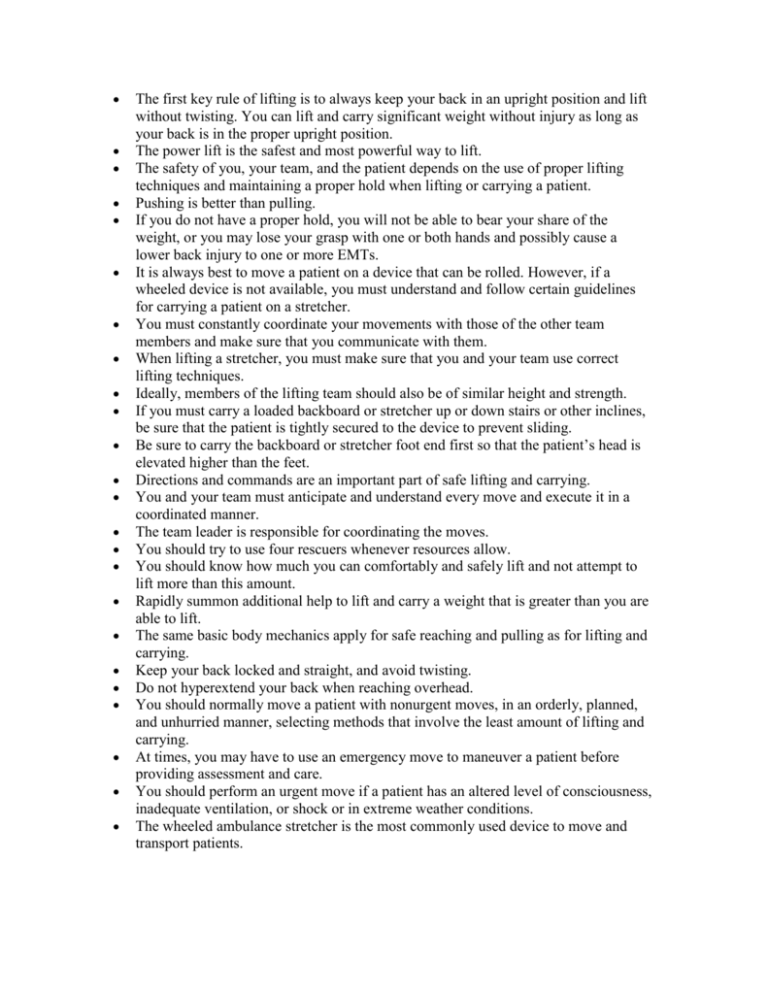
The first key rule of lifting is to always keep your back in an upright position and lift without twisting. You can lift and carry significant weight without injury as long as your back is in the proper upright position. The power lift is the safest and most powerful way to lift. The safety of you, your team, and the patient depends on the use of proper lifting techniques and maintaining a proper hold when lifting or carrying a patient. Pushing is better than pulling. If you do not have a proper hold, you will not be able to bear your share of the weight, or you may lose your grasp with one or both hands and possibly cause a lower back injury to one or more EMTs. It is always best to move a patient on a device that can be rolled. However, if a wheeled device is not available, you must understand and follow certain guidelines for carrying a patient on a stretcher. You must constantly coordinate your movements with those of the other team members and make sure that you communicate with them. When lifting a stretcher, you must make sure that you and your team use correct lifting techniques. Ideally, members of the lifting team should also be of similar height and strength. If you must carry a loaded backboard or stretcher up or down stairs or other inclines, be sure that the patient is tightly secured to the device to prevent sliding. Be sure to carry the backboard or stretcher foot end first so that the patient’s head is elevated higher than the feet. Directions and commands are an important part of safe lifting and carrying. You and your team must anticipate and understand every move and execute it in a coordinated manner. The team leader is responsible for coordinating the moves. You should try to use four rescuers whenever resources allow. You should know how much you can comfortably and safely lift and not attempt to lift more than this amount. Rapidly summon additional help to lift and carry a weight that is greater than you are able to lift. The same basic body mechanics apply for safe reaching and pulling as for lifting and carrying. Keep your back locked and straight, and avoid twisting. Do not hyperextend your back when reaching overhead. You should normally move a patient with nonurgent moves, in an orderly, planned, and unhurried manner, selecting methods that involve the least amount of lifting and carrying. At times, you may have to use an emergency move to maneuver a patient before providing assessment and care. You should perform an urgent move if a patient has an altered level of consciousness, inadequate ventilation, or shock or in extreme weather conditions. The wheeled ambulance stretcher is the most commonly used device to move and transport patients. Other devices that are used to lift and carry patients include portable stretchers, flexible stretchers, backboards, basket stretchers (Stokes litters), scoop stretchers, and stair chairs. Whenever you are moving a patient, you must take special care so that neither you, your team, nor the patient is injured. You will learn the technical skills of patient packaging and handling through practice and training. Training and practice are required to use all the equipment that is available to you. You must practice each technique with your team often so that you are able to perform the move quickly, safely, and efficiently.
